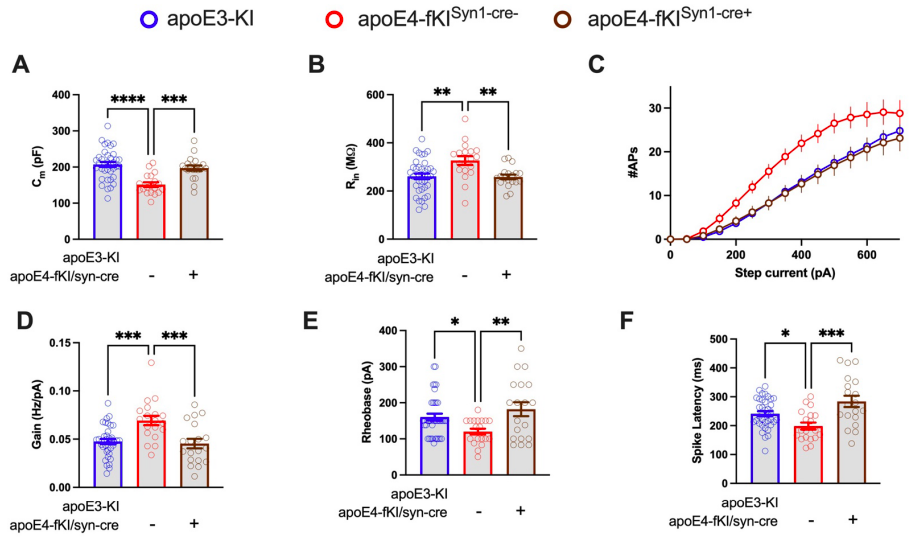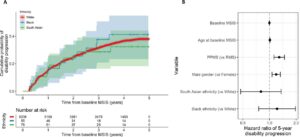
Sung-Soo Jang, et al. – UCSF.
In this study of mice expressing human ApoE3 or ApoE4, select populations of hippocampal CA3 excitatory neurons were hyperexcitable at 7-9 months of age in ApoE4-expressing mice, due to a reduction in cell size. These changes are due to expression of ApoE4 in neurons, but not in glia, which in turn promotes expression of Nell2; inhibiting Nell2 expression in ApoE4 neurons rescued these changes. These differences were absent in mice aged 17-19 months, where neurons in ApoE3-expressing mice undergo a similar size reduction; thus, while morphology-driven changes in excitability may be relevant for earlier pathology, they likely play less of a role in late pathology of CA3 neurons. Cells in the dentate gyrus did continue to show an excitation-inhibition (E-I) imbalance at the later time, however, due to a reduction of inhibitory input, suggesting that E-I imbalance may be an important factor throughout the AD time-course.




